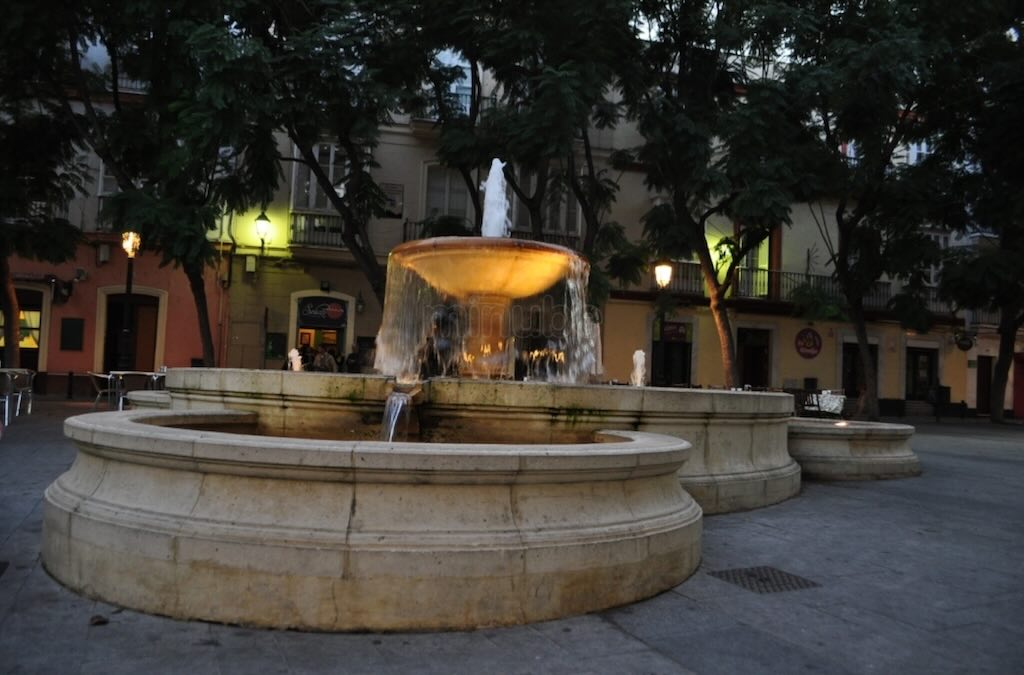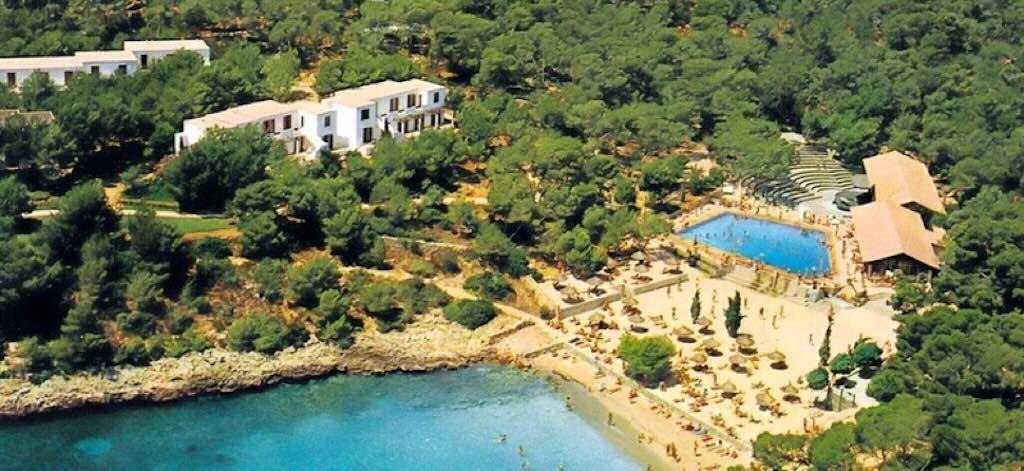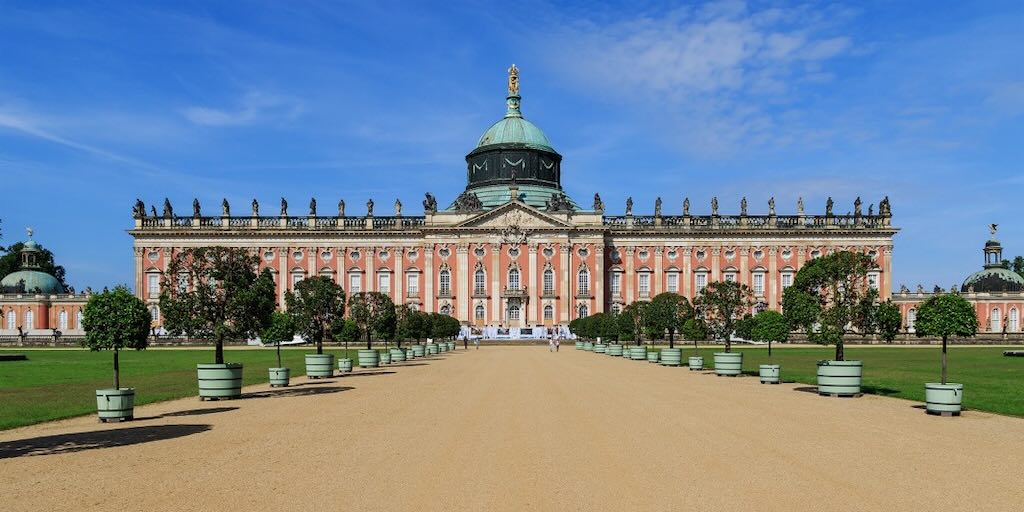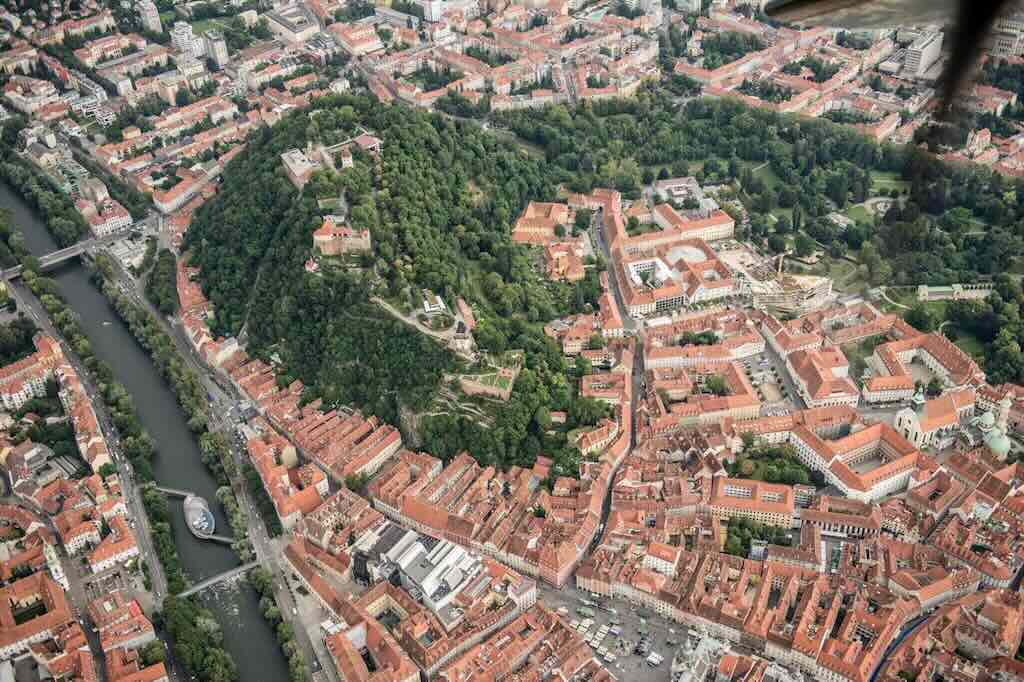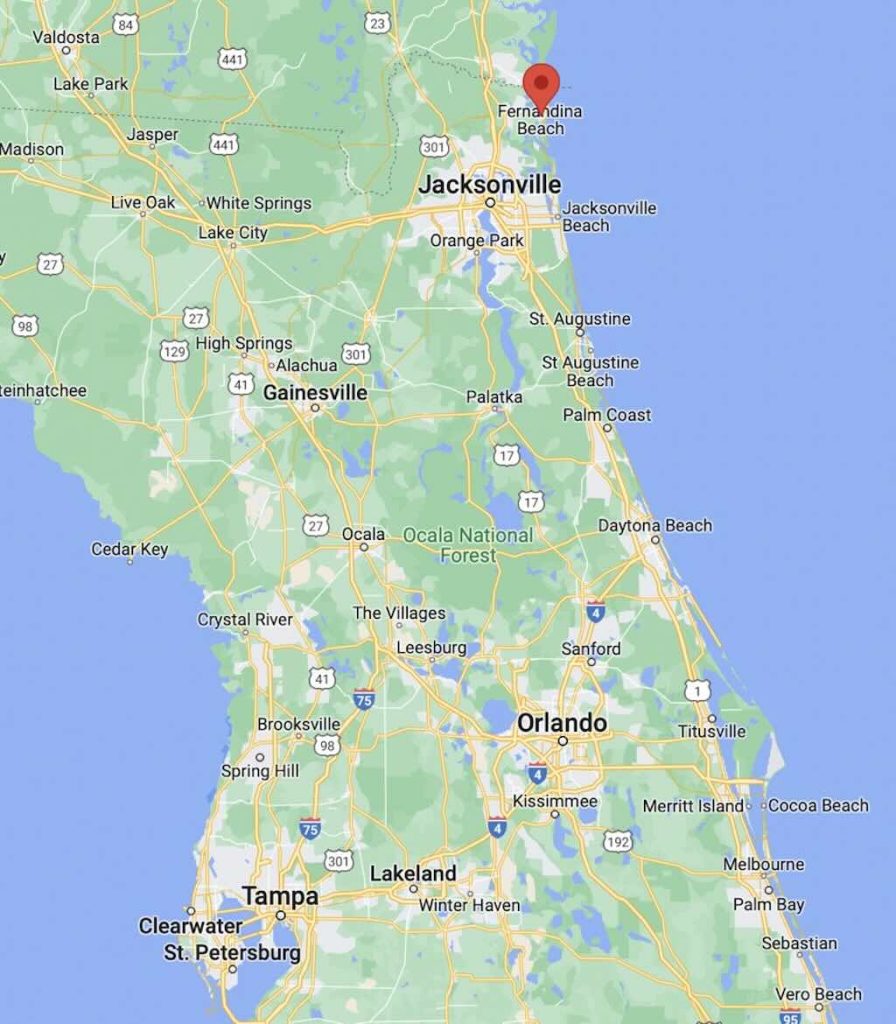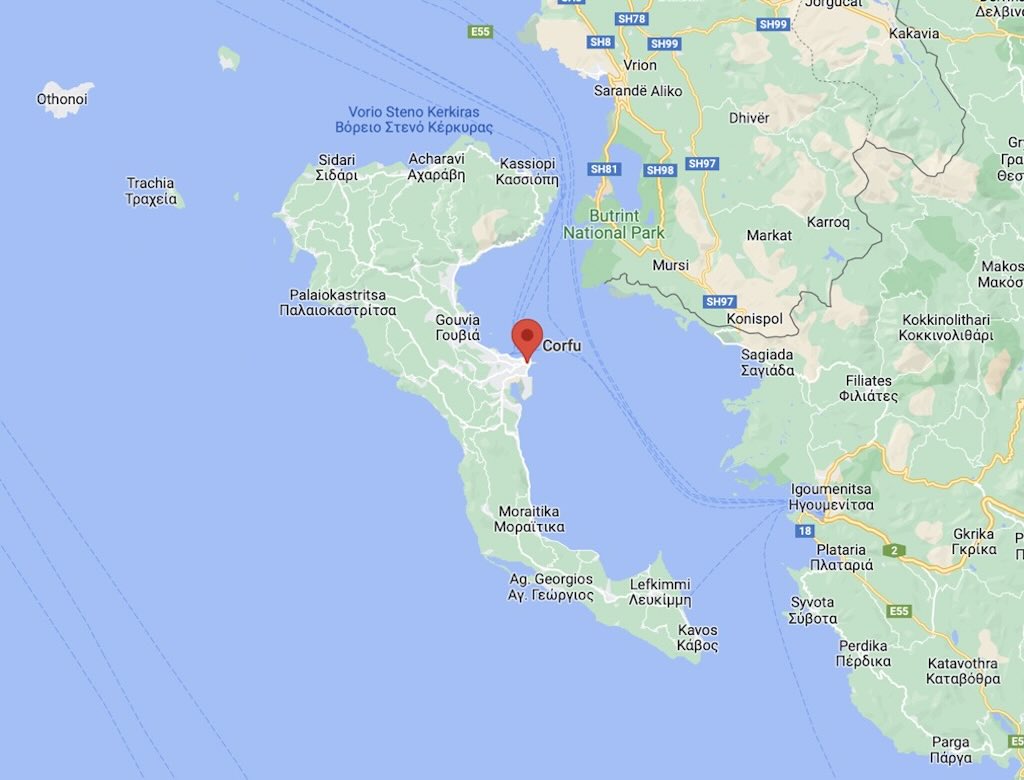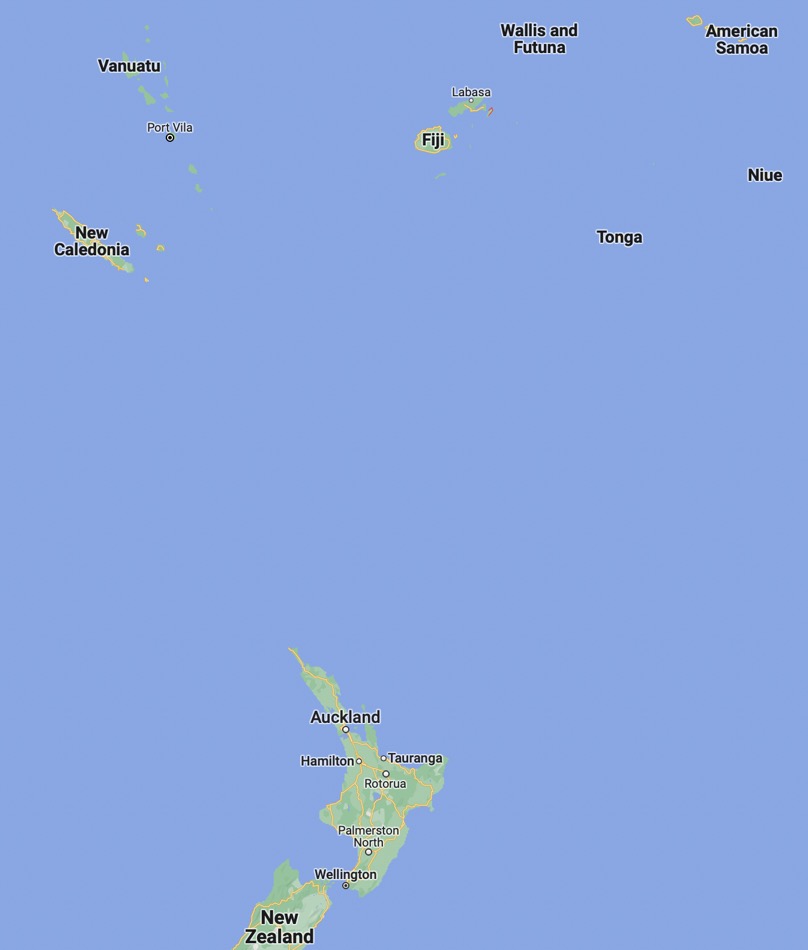My collection on Cádiz includes Cádiz I, Cádiz – II, Cádiz – Today, Cádiz – Maps, Models and the Camera Obscura, Cádiz – El Centro, Cádiz – El Pópolo, Cádiz – El Mentidero (this posting), Cádiz – San Carlos, Cádiz – Nochebuena and Nochevieja, and Cádiz – Trafalgar.
El Mentidero is a barrio in the historic centre of Cádiz. There are administrative plans that define the exact extent of the barrio (not always the case for all the different barrios). So this one runs around the north-west sea front of the city. It touches on the barrio El Balón along C/Sacramento and C/Benito Perez Galdós, runs north-east along C/Torre and C/Rosa, and runs north along C/Torre, C/San José and C/Zorrilla to the so-called Alameda Apodaca.
The key attractions in this barrio include, Parque Genovés, the Alameda Apodaca, the Gran Teatro Falla, the Plaza del Mentidero, the Iglesia San Antonio, and the Plaza San Antonio, the Iglesia de Nuestra Señora del Carmen, the Baluarte de la Candelaria, the Centro Cultural Reina Sofia, and some university buildings.
The first thing is to understand the word “mentidero”, which means liars. The name comes from the small elongated triangular Plaza del Mentidero. The plaza was created in 1755, and includes a shrine, later called the Cross of Truth (Cruz de la Verdad). There is a joke associated with this, because the plaza became the place where the unemployed would meet to discuss the latest news, and at the same time pass on rumours and lies (and the place became known as Plaza de la Cruz de las Mentiras).
We must have walked through this plaza twice daily, and there were always some people sitting out having a coffee or a beer. Several times there were flamenco musicians playing in the late afternoon.
Before visiting the different plazas in the barrio, lets have a walk through the gardens along the north-west and north-east of the “island”.
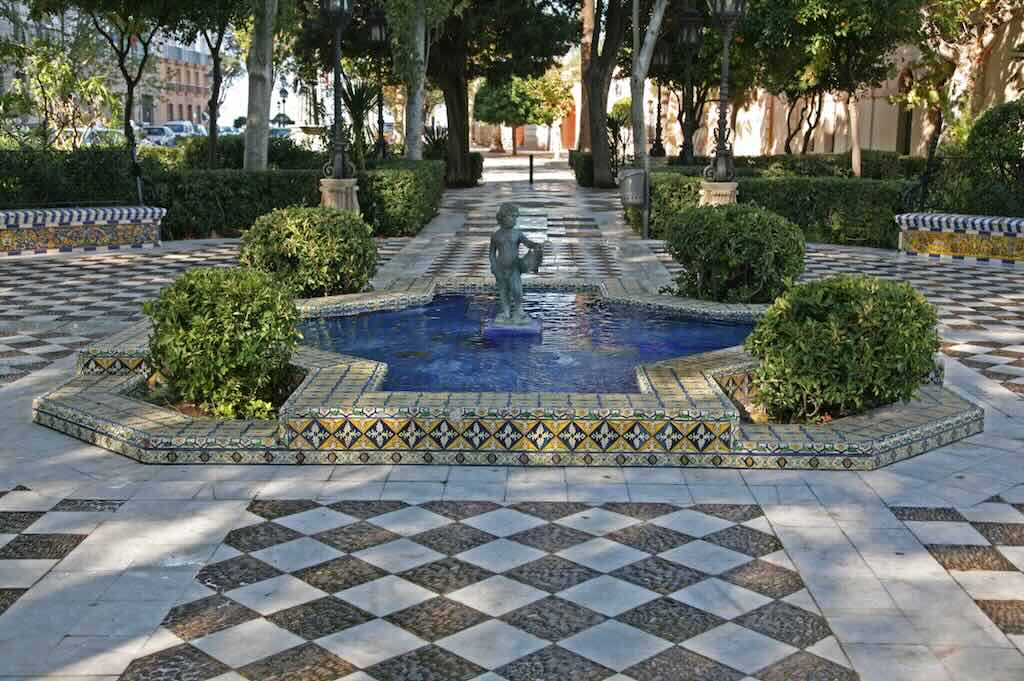
The oldest garden is the so-called Alameda Apodaca, which is a very old and traditional garden running along the fortress wall. As far as I can understand it, the walk was already enjoyed in 1617, but the present cerámicas Sevillanas and wrought iron dates from 1926. These gardens were once just called Alameda, but the name Apodaca was added in memory of the wealthy merchant Juan Ruiz de Apodaca (1754-1835), who was born in Cádiz and who was gobernador de la isla de Cuba, and who died planning the re-conquest of Mexico.
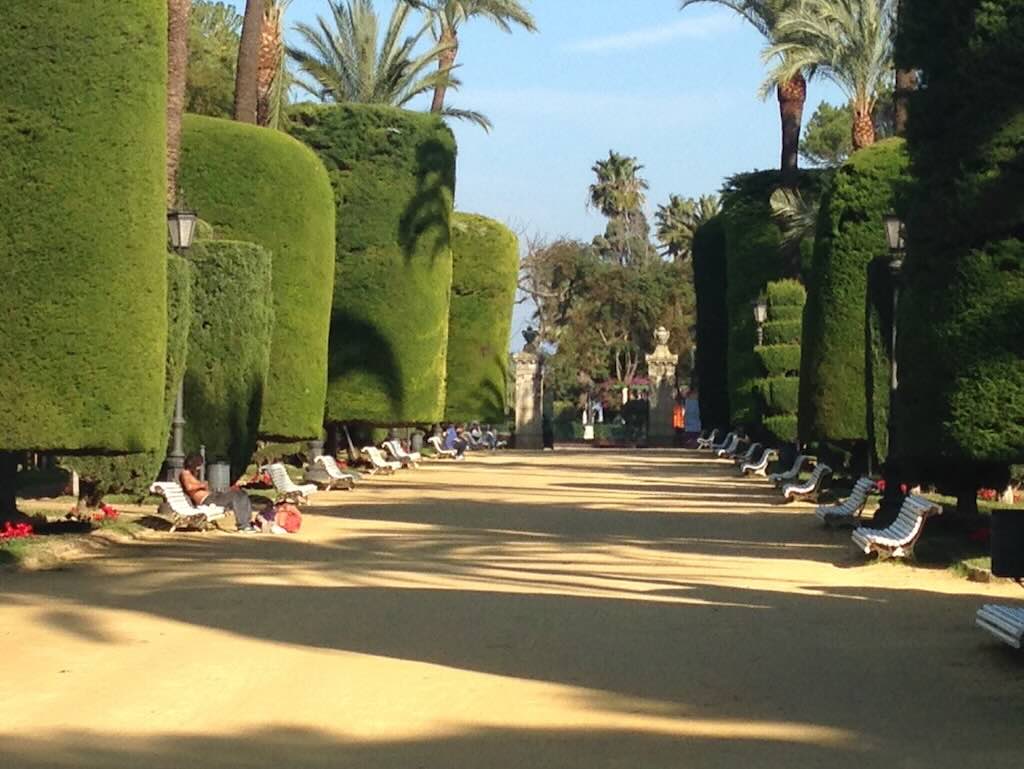
The “other” garden is the Parque Genovés. Our hotel, the local Parador, was right next to these gardens, so it was our pleasure each day to walk through them, sit down, take the sun, and watch the world go by. And we saw first-hand how the gaditanos enjoy their city. People strolling, children playing, despite the gardens not being at their best (it was winter and there were building works along the promenade), you could still see that the gardens were appreciated and well-used. As with everything in this small city, these gardens also have their “history”.
The garden itself is a kind of botanical garden with more than 100 varieties of plants from around the world. It is amazing to think that originally it was a walk though fields between the barracks and a local water pump. Originally called the El Paseo de las Delicias, it was redesigned in 1862 to become a formal gardens. The garden is named after the gardener who reopened it, Geronimo Genoese.

The Iglesia de Nuestra Señora del Carmen is a Baroque style church built between 1743 and 1762. It is famous for a gilded wood statue of Ntra. Sra. del Carmen by Jacinto Pimentel, and dated 1638.
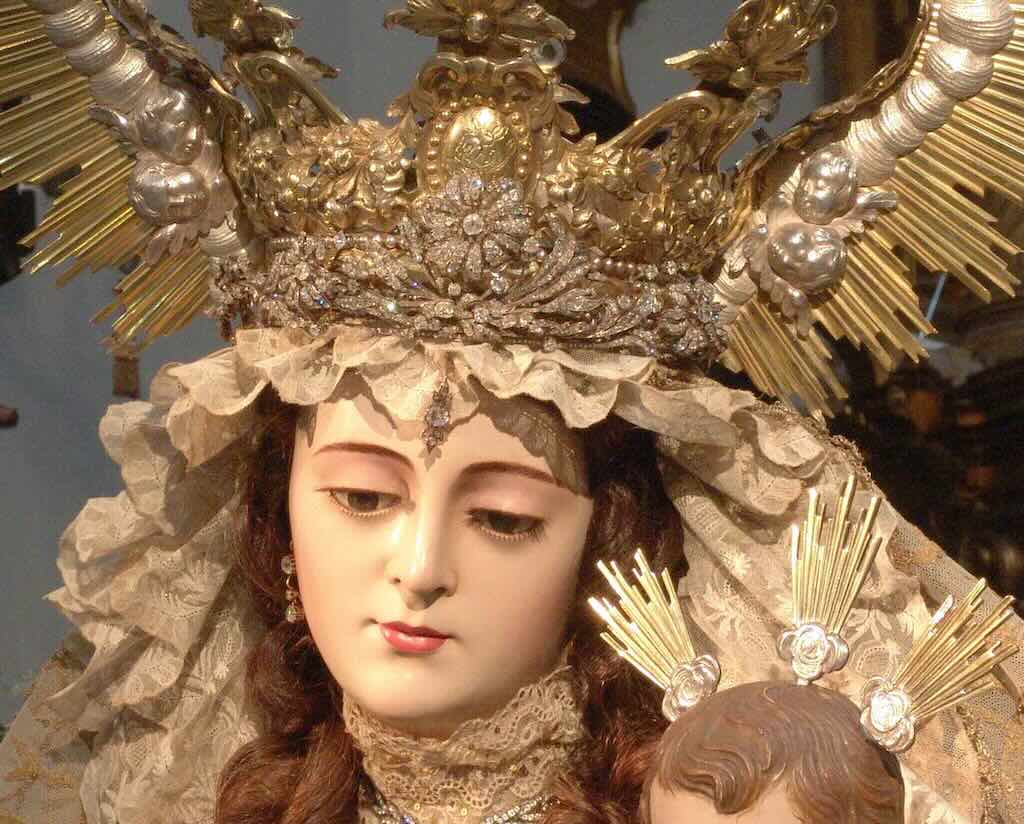
The Virgin del Carmen is both the patroness of the Carmelite Order, and of the sea, and thus sailors and of course the Armada Española.
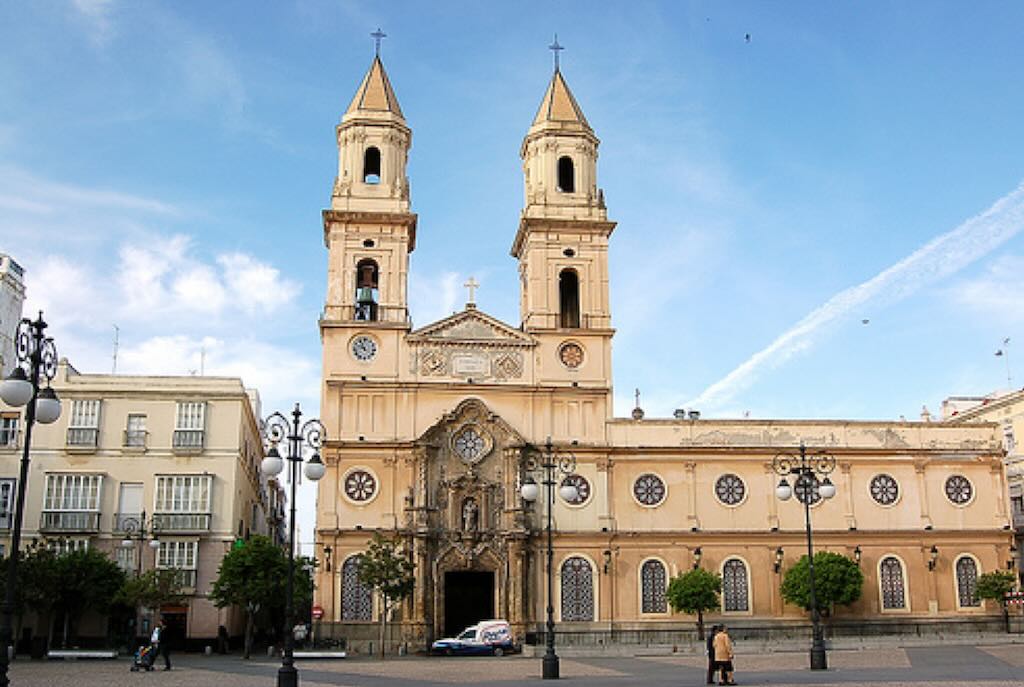
Iglesia de San Antonio de Padua is another Baroque church, dating from 1699, but subject to considerable modifications over time. The church is in Plaza San Antonio. However until the mid-17th century the square was called Campo de la Jara, named after the nearby Pozo de la Jara, which provided the city with fresh water.
I understand that the plaza was originally a parade ground (plaza de armas y alrededor) around which important bourgeois families lived (e.g. bankers and traders). Then it was decided to transform a small chapel into a grandiose church. During our visit in 2014 the plaza hosted a whole series of small temporary shops and a play area for children.
A renovation of the church in 1858 added a second tower identical to the first, and a Neoclassical look to the buildings exterior whilst keeping the Baroque main entrance. The original Baroque entrance consists of two superimposed parts, with so-called Corinthian columns support an upper niche with a statue of San Antonio.
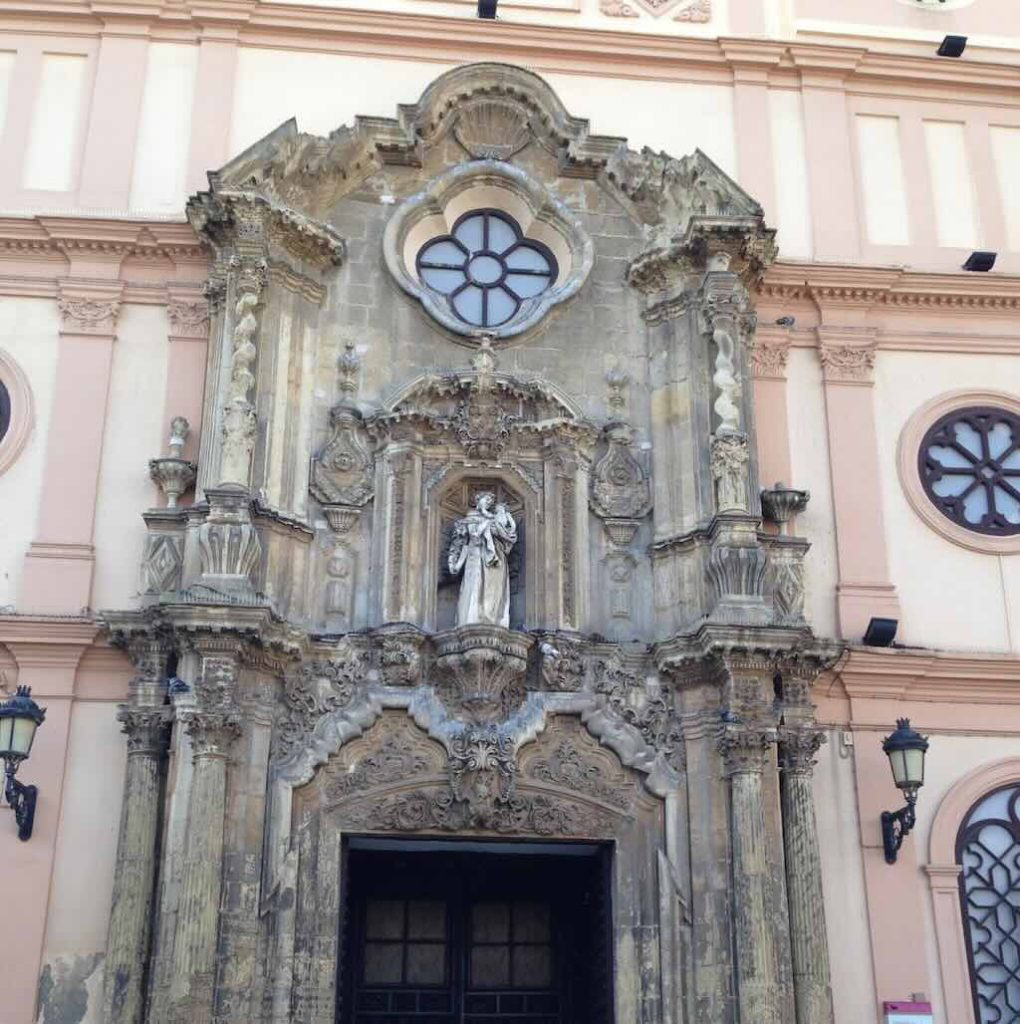
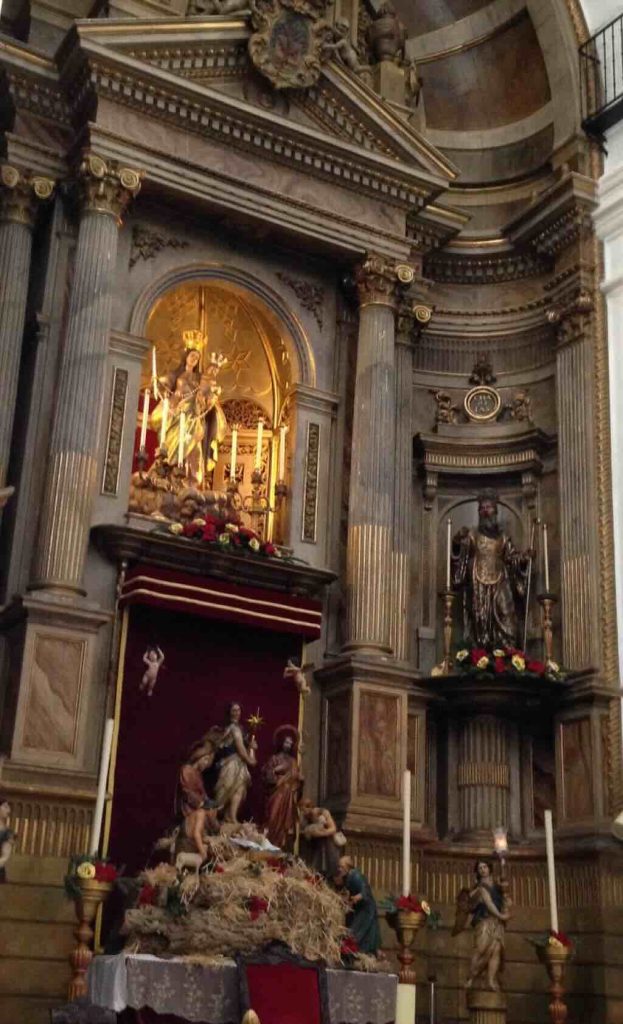
The rest of the interior is a mix of a simple decoration and white walls, which helps highlight the various elaborate Baroque altars.
The central altar we see above is in fact made of wood imitating polychrome marble. It is by gaditano architect Manuel Garcia del Alamo (1813-1888) and is Neoclassical in style (dating from 1856). The Virgin is by the Baroque sculptor Pedro Roldán (1624-1699).
The smaller side altar is the Virgen de las Lágrimas, the symbol of the present confradía. The statue dates from 1766, and the altar is actually built from pieces from the 19th and 20th centuries.

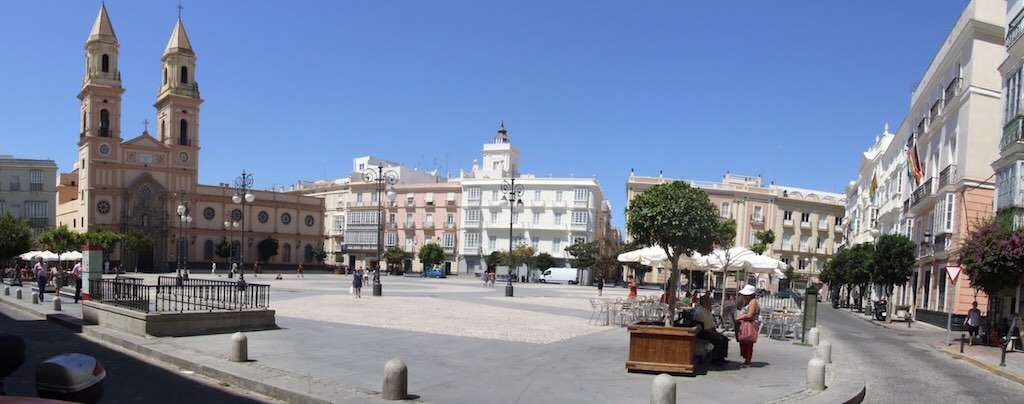
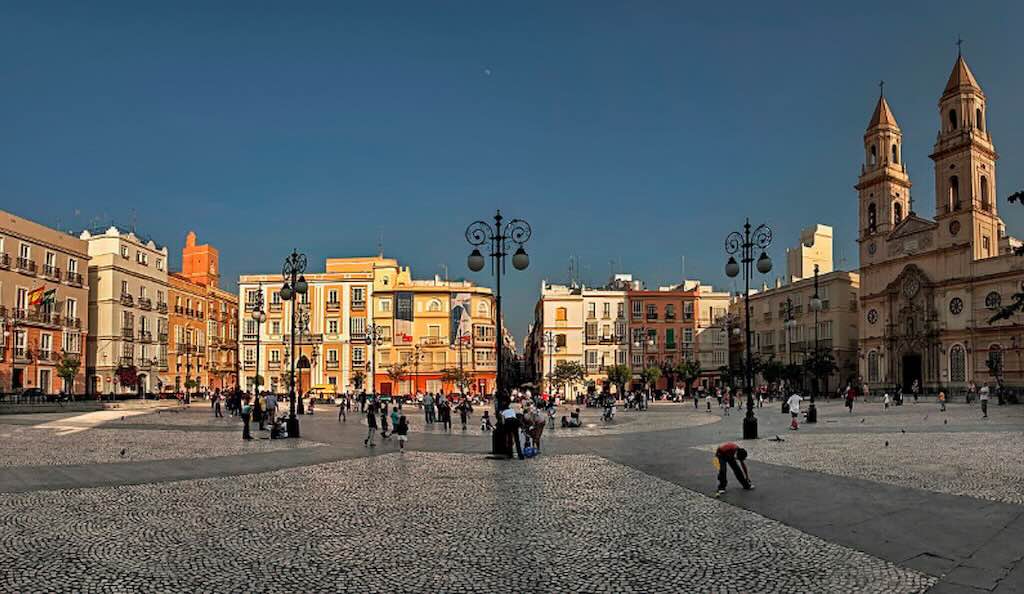
During our visit in 2014 we could see that the Plaza San Antonio is a well known meeting place for locals, particularly “gaditanas” with their children. And this was also the case during the preparation of the Constitución Española del 1812. In fact women were excluded from the political life of the city and were not recognised in the Constitución. The men would walk and meet in Calle Ancha, and lunch in the Café Apollo in Plaza San Antonio. The men in the back rooms “talking politics”, and the women lunching on the terraces. The women would organise the evenings entertainment, which might finish with some dancing. It has been suggested that these ladies were, in one way or another, able to directly influence las Cortes, and they became known as “las Cortes chicas”.
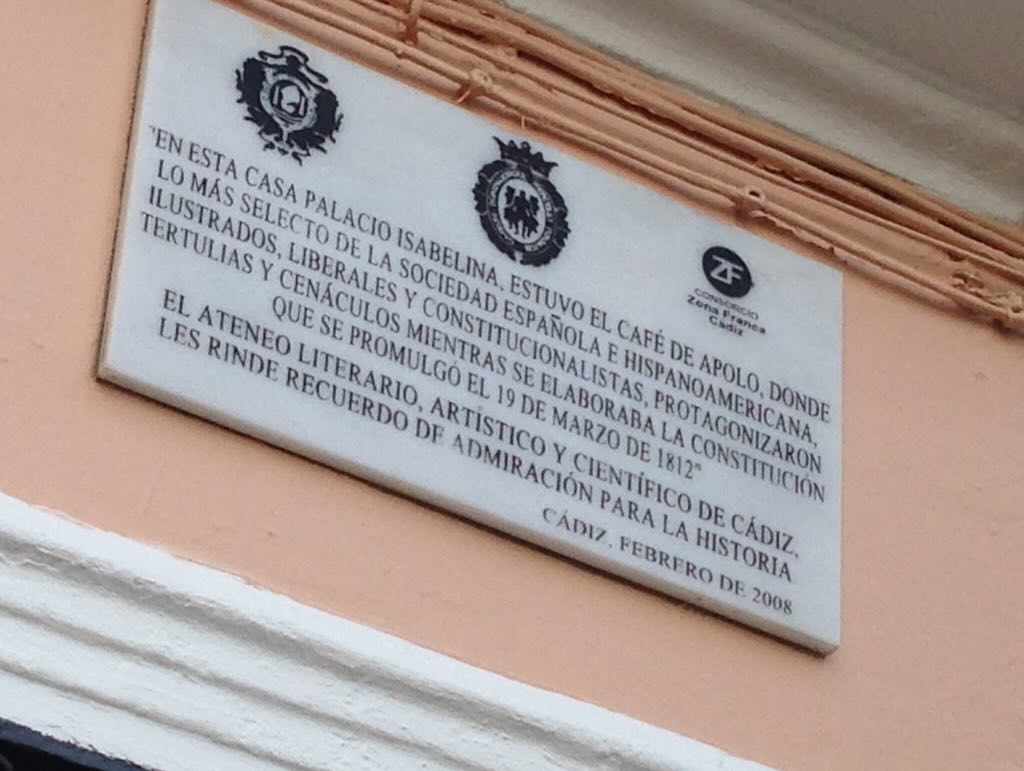
Another building in the Plaza San Antonio (the No.10) was where the first draw of the Spanish lottery (“Lotería Moderna”) took place on May 4, 1812. In fact the first Spanish lottery (now known as “La Primitiva”) was created in 1763 on the model used in Naples, Italy. The lottery has been associated with the Cogegio San Ildefonso since 1771. However a new Spanish National Lottery was conceived in 1811 in order to help the Public Treasury pay for the war without raising taxes (and along the lines of a lottery in New Spain, now Mexico). The offices of the lottery moved over times from Cádiz, to San Fernando, to Ceuta, and finally to Madrid (by Feb. 1814).
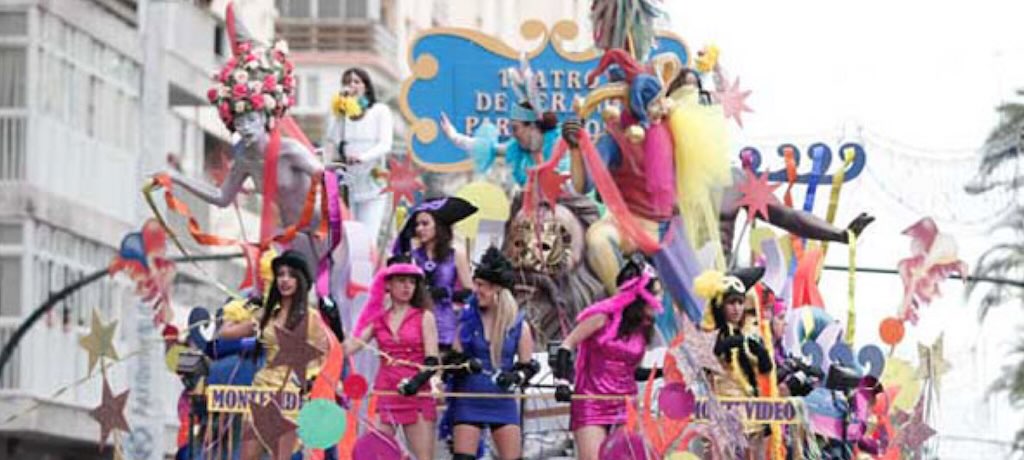
Ignoring the parks for a moment, this barrio is essentially a few churches and lots of different plazas, Mentidero, Fragela, San Antonio, Falla, Palillero, Viudas, … Plazas, each with their own stories and traditions. Fragela and Falla as the center-points for the carnival of Cádiz (a massive 2-week event), Palillero for the Semana Santa, San Antonio for its role in the history of Cádiz and Spain.
The Gran Teatro Falla, sits next to Plaza Falla and in front of Plaza Fragela and the Casa de las Viudas (I think it is now an old peoples home). The theatre was built between 1884 and 1905, in what is called the Neomudéjar style. Built in red brick, with horseshoe arches, it can hold 1,200 spectators. It is in this theatre that the different carnival groups showoff each year.

In the far north-west corner of the barrio, overlooking the Atlantic there are three notable buildings. The first is the Baluarte de la Candelaria, essentially a bastion (stronghold) in the fortified wall around the city, guarding the entry to the bay. Interestingly it was where the army engineers kept their courier pigeons. It is now (2014) a cultural centre, and frankly of little tourist value.
Another building that disappointed me was the Centro Cultural Reine Sofia. It sits just in front of the Baluarte de la Candelaria, and was the military governments house (later divided into apartments for military engineers). In 2014 it had a collection of photos, etc. and a library, but nothing worth the effort of a visit. And effectively the guard on the entrance appeared surprised to see someone.
The third “attraction” in that north-west corner is the Espacio de Creación Contemporáneo (ECCO). The building was originally an artillery barracks built in 1732, but now has been transformed into a very interesting space for contemporary art.
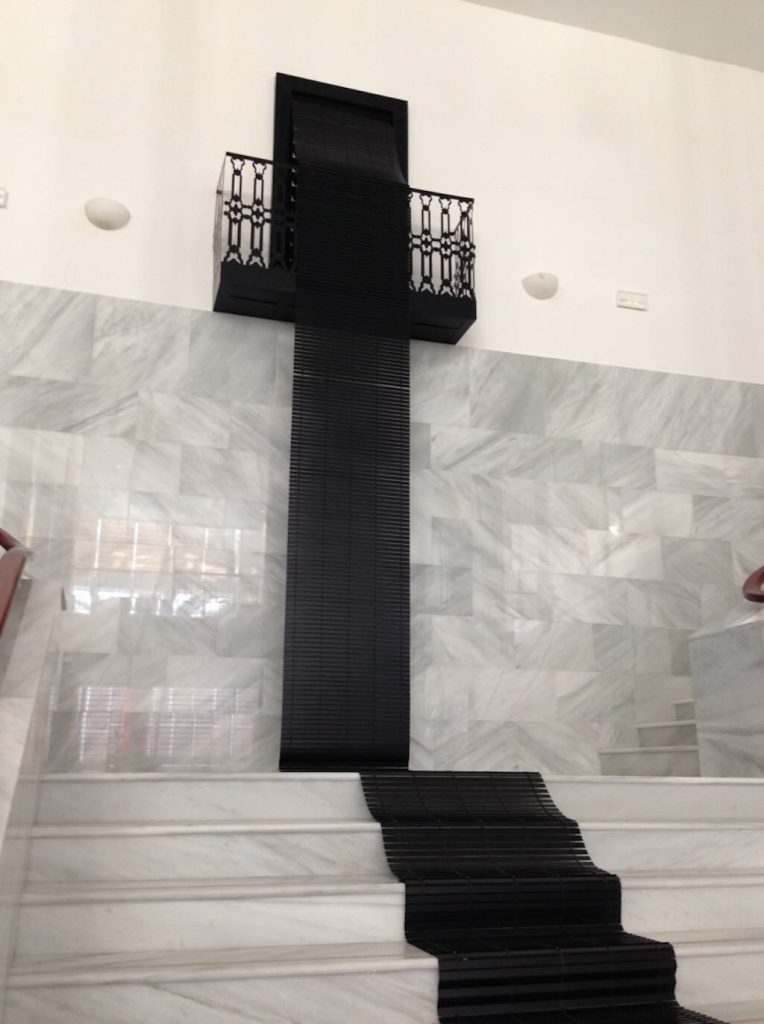
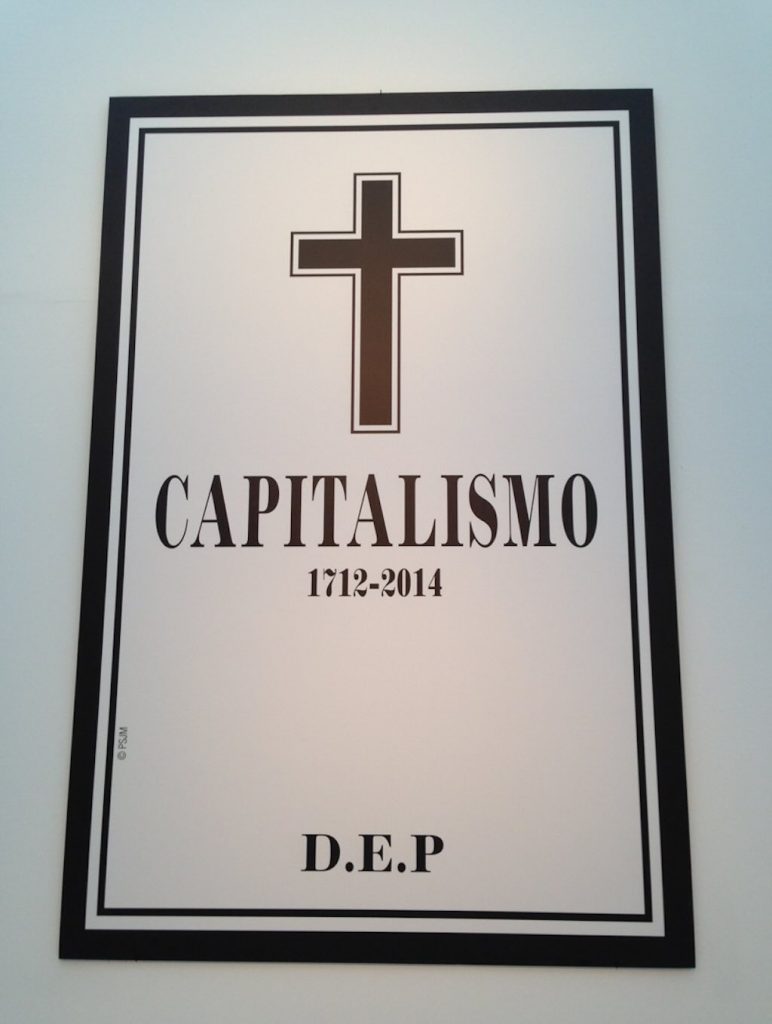
I haven’t been able to identify the piece on the left.
On the right, PSJM proposes, in “Capitalismo DEP 1712-2014”, a large-format obituary made as if it were an advertising poster, a premonitory announcement that sets the year in which the steam engine was invented as the birth of capitalism and the year after each exhibition in which the piece participates as its year of death.
PSJM is a Spanish artist collective formed by Cynthia Viera and Pablo San José. They present themselves as an “art brand”, appropriating the strategies of advanced capitalism to subvert its symbolic structures.
